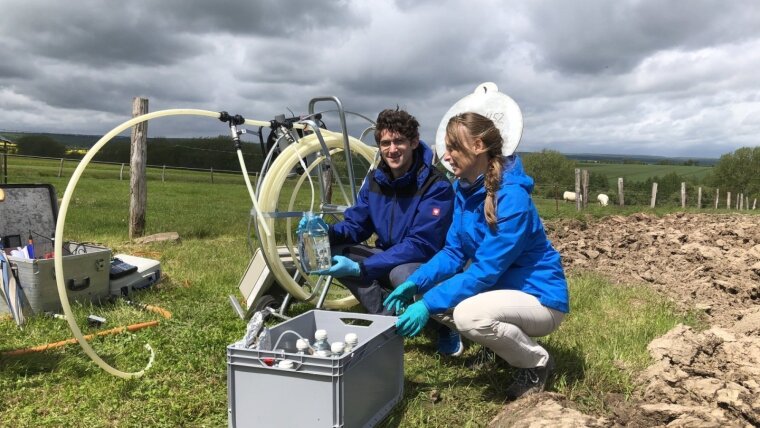
Since 2013, we are studying groundwater microbiomes within activities of the Collaborative Research Centre (CRC) AquaDiva. Here we test the central hypothesis that surface and subsurface are coupled by fluid flow, so that surface changes will propagate into the subsurface and change its functioning.
We conceive the subsurface as ‘biogeochemical reactor’ that retains and transforms the water, matter, gases and genetic information that pass through it. To cope with the specific conditions of the deep biosphere, i.e., complete darkness that leads to a lack of photosynthetic primary production and further oxygen supply, subsurface microbes have developed diverse strategies. Thus, they are adapted to low or no oxygen availability, and rely on transport of allochthonous organic material from the surface, ancient organic matter deposited in sedimentary rocks or on chemolithoautotrophic primary production. Surface-near groundwaters represent an interesting boundary, where microorganisms experience a combination of resources. Surface inputs also provide a constant infiltration of soil-derived bacteria into the subsurface, especially ultra-small bacteria belonging to the Candidate Phyla Radiation (CPR), which are predicted to have a symbiotic lifestyle due to their reduced genome size. As only a portion of them can flourish in the groundwater, the remainder can be thought to provide microbially-derived carbon to the subsurface.
Using a combination of time-series analyses of field observations and manipulative microcosm experiments, we aim to answer the central question on how important surface input is for feeding the groundwater microbiome. We use comparative metagenomics and metatranscriptomics analyses to identify chemolithoautotrophic hotspots and established a novel14C-labeling method to measure rates of CO2 fixation. In parallel, metaproteome-SIP and single-cell resolution measurements of heavy isotope incorporation into biomass by Raman microspectroscopy in cooperation with the Leibniz Institute of Photonic Technology (IPHT)External link allow us to link metabolic activities to protein phylogeny and function. Our data show that several groundwater bacteria prefer a mixotrophic lifestyle, supplementing their organic-carbon requirements with autotrophy.